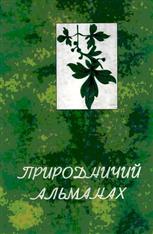ECOLOGICAL FEATURES OF BEETLE SPECIES OF THE SUBFAMILY DASYTINAE (COLEOPTERA: MELYRIDAE) IN THE FAUNA OF THE UKRAINIAN CARPATHIANS
Abstract
The paper analyzes the ecological characteristics of the Dasytinae beetles of the family Melyridae. Most species in the imago stage inhabit semi-open and shaded habitats, where they can be found on grassy, shrubby, and woody vegetation. Based on the analysis of imago hygropreferences, we identified the following groups: forest mesophiles, forest mesoxerophiles, forest-meadow mesophiles, forest-meadow mesoxerophiles, polytopic mesoxerophiles, and polytopic mesophiles. Among Dasytinae, the largest proportion of species belongs to forest mesophiles (34%). According to vegetation layer preferences, the studied beetles were classified into hortobionts, dendrobionts, and dendro-hortobionts with proportions of 40%, 33.3% і 26.7% of the subfamily's species, respectively. A detailed analysis of the contents of dissected esophagi revealed fragmented and intact pollen grains, as well as small remains of arthropod cuticular coverings with bristles and hairs. Additionally, experiments were conducted to detect pollen in the digestive tract of imagos. Microscopic analysis showed that most pollen grains belonged to plants from the Poaceae family. The conducted research allowed us to identified two trophic groups among Dasytinae beetles: palynophages – more than 93% of species, and palyno-zoophages – approximately 7%. Among Dasytinae beetles, the highest number of species feed on plants from the Fagaceae family – 10 species in total. Representatives of the subfamily Dasytinae, inhabiting a wide range of natural and artificial biocenoses of the Ukrainian Carpathians, act as primary consumers of biological communities in both open meadow and forest ecosystems. Imagos of Dasytinae primarily inhabit the herbaceous layer of vegetation, with most species being primary consumers. Feeding on pollen, these beetles serve as pollinators of plants from the families Asteraceae, Ranunculaceae, Rosaceae, Fabaceae, Polygonaceae, Brassicaceae, Grossulariaceae, Apiaceae, and Cyperaceae.
References
2. Надворный В.Г., Кравченко А.М. Эколого-фаунистический обзор жуков малашек Coleoptera, Malachiidae Шацкого национального природного парка и его окрестностей. Міжнародна науково-практична конференція «Природні ресурси, екологія та охорона здоров’я Полісся». Збірник матеріалів, вип. ІІІ. Луцьк. 2000. С. 119–124.
3. Доброчаева Д.Н., Котов М.И., Прокудин Ю.Н. и др. Определитель высших растений Украины. Київ: Фітосоціоцентр. 1999. 548 с.
4. Allenspach V., Wittmer W. Insecta Helvetica Catalogus, 4 Coleoptera, Cantaroidea, Cleroidea, Lymexylonoidea. Zurich. 1979. S. 74–96.
5. Benisch C. Die Käferfauna Deutschlands. 2007-2023. Available at: https://www.kerbtier.de/cgi-bin/enFSearch.cgi?Fam=Melyridae
6. Evers A.M.J. Aufteilung der paläarktischen Arten des Gattungskomplexes Malachius F. (54. Beitrag zur Kenntnis der Malachiidae). Entomologische Blätter. 1985;81(1–2): 1–40.
7. Evers A.M.J. Synopsis der Gattung Apalochrus Er. und der verwandten Gattungen der Welt (Col., Malachiidae). Musee Royal de L’Afrique Centrale Tervuren, Belgique scieces zoologiques. 1987;253: 1–73.
8. Evers A.M.J. Phylogenetisch relevante adaptive Organveränderungen bei den Malachiidae infolge differenter ökologischer und ethologischer Strategien (81. Beitrag zur Kenntnis der Malachiidae). Entomologische Blätter. 1991:87(1–2): 66–75.
9. Matthes D. Funktionsmorphologische Studien an den Mundwerkzeugen pollenfressender Coleopteren (Malachiidae). Naturwissenschaften. 1966:53(14): 364.
10. Mayor A. Family Dasytidae, Malachiidae. Catalogue of Palaearctic Coleoptera. Volume 4 [eds. I. Löbl, A. Smetana]. Stenstrup: Apollo Books. 2007. S. 388–455.
11. Porsch O. Windpollen und Blumeninsekt. Österreichische Botanische Zeitschrift. 1956;103(Heft 1): 1–18.
12. Roubal J. Katalog Coleopter (brouků) Slovenska a Podkarpatska. T. 2. Praha. 1936. S. 17–28.
13. Smith E.G. Sampling and identifying allergenic pollens and molds. An illustrated identification manual for air samples. Blewstone Press, San Antonio. 1986. 98 pp.

